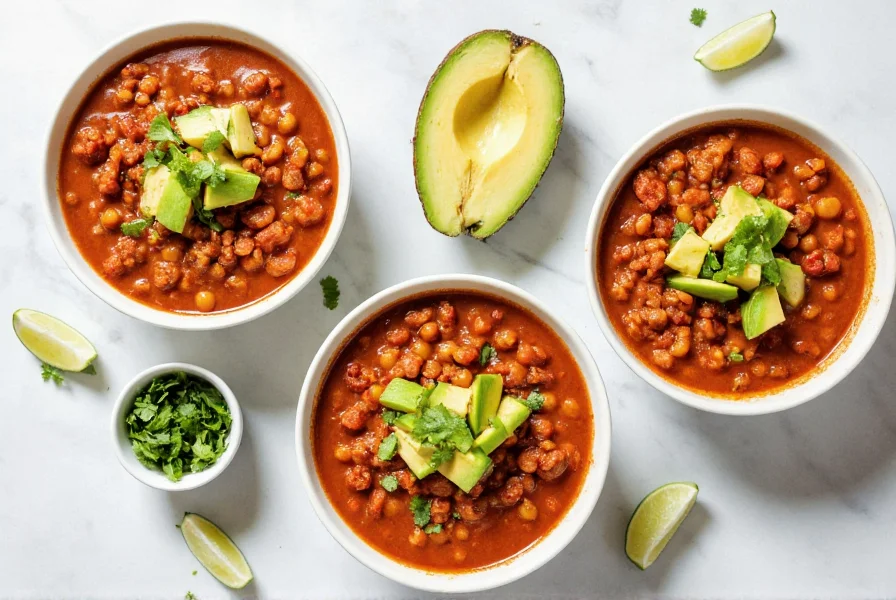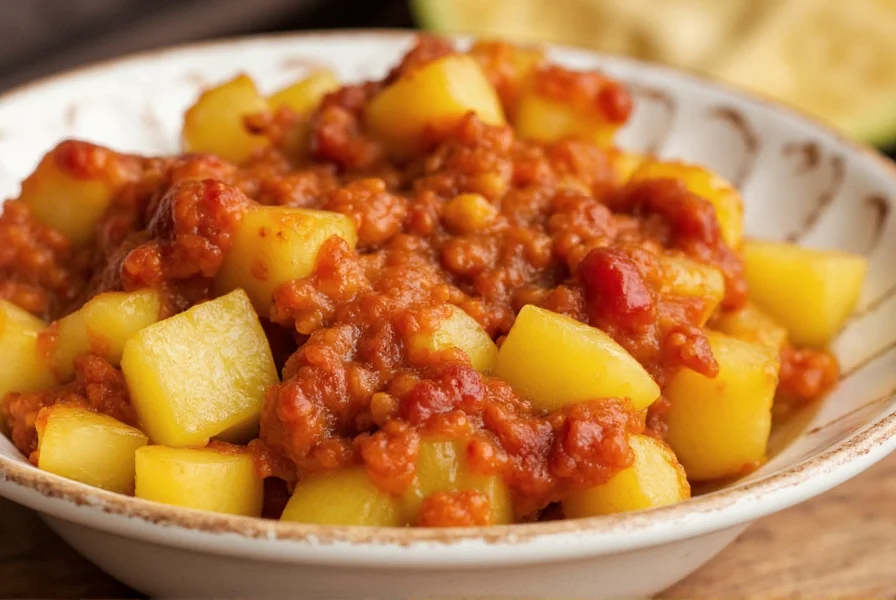For food enthusiasts exploring unique flavor combinations, pineapple chili represents an innovative twist on a classic dish. This sweet and savory fusion has gained popularity across various culinary traditions, particularly in tropical regions and modern fusion cuisine. Understanding why this pairing works requires examining both the science of flavor and cultural culinary practices.
The Science Behind Pineapple and Chili Pairing
When considering how to make pineapple chili recipe successful, the chemistry of flavor interaction is crucial. Pineapple contains bromelain, a proteolytic enzyme that breaks down proteins, which can tenderize meats in chili while adding subtle sweetness. The pH balance between pineapple's natural acidity (around 3.3-5.2) and chili components creates a more complex flavor profile than traditional recipes.
Food scientists note that sweet elements like pineapple can reduce the perceived heat from capsaicin, the compound responsible for chili's spiciness. This pineapple and chili flavor pairing creates what culinary experts call "flavor layering"—where multiple taste sensations unfold sequentially rather than competing.

Cultural Origins of Pineapple in Chili Dishes
While traditional chili con carne originated in Texas without fruit components, the incorporation of pineapple reflects global culinary exchange. Hawaiian cuisine first popularized sweet elements in savory dishes, particularly with their famous "loco moco" variations. Southeast Asian cooking traditions also frequently combine fruit with spicy elements, as seen in Thai and Vietnamese cuisines.
The modern sweet and spicy pineapple chili trend emerged in the 1990s as chefs experimented with fusion cooking. Today, this combination appears in diverse forms from street food vendors in Mexico serving pineapple-topped chili con carne to upscale restaurants featuring gourmet pineapple chili variations.
Three Authentic Pineapple Chili Variations
Understanding different approaches to best pineapple chili variations helps home cooks find their preferred balance of sweet and heat. Here's a comparison of popular styles:
| Variation Type | Key Ingredients | Heat Level | Preparation Time |
|---|---|---|---|
| Hawaiian Fusion | Ground beef, fresh pineapple, jalapeños, coconut milk | Mild (2/5) | 45 minutes |
| Mexican-Inspired | Beans, pineapple, chipotle peppers, tomatoes | Medium (3/5) | 60 minutes |
| Tropical Vegan | Jackfruit, pineapple, sweet potatoes, habanero | Hot (4/5) | 35 minutes |
Perfecting Your Pineapple Chili Recipe
When preparing pineapple chili recipe for beginners, timing matters significantly. Add fresh pineapple during the last 15-20 minutes of cooking to preserve its texture and bright flavor. Canned pineapple works in a pinch but contains added sugars that alter the flavor balance—opt for pineapple packed in its own juice rather than syrup.
For optimal results, consider these professional tips:
- Use ripe but firm pineapple for the best flavor-to-juice ratio
- Brown meats thoroughly before adding pineapple to develop deeper flavors
- Add pineapple in two stages: half early for flavor infusion, half late for texture
- Balance with acidic elements like lime juice to prevent overwhelming sweetness

Serving and Pairing Suggestions
Understanding proper pineapple chili serving suggestions elevates this dish from casual meal to culinary experience. The sweet-spicy profile pairs exceptionally well with:
- Cilantro-lime rice (complements the tropical notes)
- Cornbread with honey (enhances the sweet element)
- Avocado slices (provides creamy contrast to heat)
- Light lager or wheat beer (cleanses the palate between bites)
For meal prep enthusiasts exploring does pineapple belong in chili for practical cooking, note that pineapple chili reheats exceptionally well. The flavors continue to meld during storage, often tasting better on day two. Store in airtight containers for up to four days or freeze portions for up to three months.
Nutritional Considerations
While not a traditional health food, pineapple chili offers some nutritional advantages over standard recipes. Pineapple contributes vitamin C, manganese, and bromelain enzyme, which aids digestion. The natural sweetness reduces the need for added sugars often found in commercial chili recipes.
For those monitoring dietary intake, consider these modifications:
- Use lean ground turkey instead of beef for lower fat content
- Add extra beans for increased fiber and plant-based protein
- Control sodium by using no-salt-added tomato products
- Boost vegetable content with diced bell peppers and zucchini
Frequently Asked Questions
Does pineapple actually belong in chili traditionally?
No, traditional Texas-style chili never included fruit. Pineapple in chili emerged from fusion cuisine in the late 20th century, combining Hawaiian and Mexican culinary traditions. While not historically authentic, it has developed its own following as a distinct variation.
Will pineapple make my chili taste too sweet?
Not if properly balanced. The key is using the right pineapple-to-chili ratio (typically 1 cup pineapple per 4 cups chili) and allowing sufficient cooking time for flavors to meld. The acidity in pineapple actually enhances savory notes rather than creating overwhelming sweetness when prepared correctly.
Can I use canned pineapple instead of fresh?
Yes, but with adjustments. Canned pineapple works well but often contains added sugars that can throw off flavor balance. If using canned, select varieties packed in juice (not syrup), drain thoroughly, and reduce other sweet elements in your recipe. Fresh pineapple generally provides brighter flavor and better texture.
How does pineapple affect the texture of chili?
Pineapple's bromelain enzyme tenderizes proteins, which can make meat more succulent. However, too much pineapple or prolonged cooking can make meat mushy. For best results, add pineapple during the last 15-20 minutes of cooking to benefit from flavor enhancement without texture compromise.
What chili peppers work best with pineapple?
Milder peppers like Anaheim or poblano create balanced heat that complements rather than overwhelms pineapple's sweetness. For more adventurous palates, chipotle peppers add smoky depth that pairs beautifully with tropical notes. Avoid extremely hot peppers like ghost peppers that would dominate the delicate flavor balance.











 浙公网安备
33010002000092号
浙公网安备
33010002000092号 浙B2-20120091-4
浙B2-20120091-4